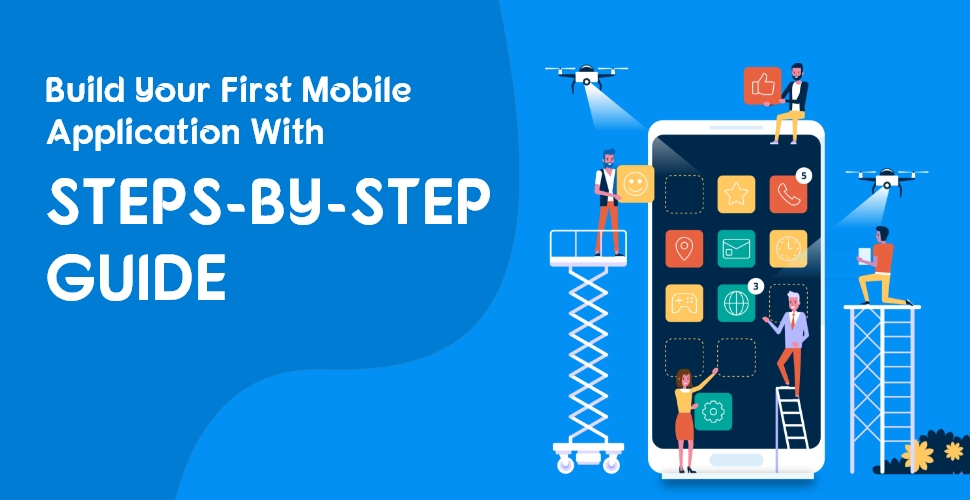What made you decide to create a mobile app? Have you encountered a challenge that you believe you can solve, or do you wish to follow in the footsteps of previous business people?
The response to this query will determine your app’s success or failure. Here is a starting point; however, remember that it might only work for some.
Take what you need for your approach or adhere to it to the letter. The most crucial step is to begin.

Also Read: Review of the Top 5 smart home devices of 2023
Step 1: Create a plan
Project planning is the initial step in any product development or entrepreneurial endeavor. Having a clear idea of your goals is crucial for determining whether the development process is moving in the right direction.
You have an idea for the app at this point. First, discover the issue you are attempting to solve.
Then, try to set your concept apart from the competition by developing various original, cutting-edge, and creative approaches to the topic, the game, or the subject being taught.
Additionally, this is a beautiful time to learn more about your target market. What equipment do they have? Do they use iOS from Apple or Android?
When you begin promoting your new mobile app, where can you find them? And how might your app generate income? Yes, you must arrange your finances as well.
There is intense competition in the application stores, and numerous brand-new, top-notch programs are released daily. 80% of app developers need to make more money from their apps to sustain themselves or even a stand-alone company.
Plan if you want to be something other than 80%. So seek out issues in your day-to-day existence and make a note of each one.
Once you’ve created an exhaustive list, start considering solutions and shortlisting the problems that make the most sense.
Step 2: Determine the necessity
Validation will demonstrate that there is interest in your app. You may confirm your hypothesis using the Google Keyword Planner tool by checking the number of people searching for what you’re trying to do.
You could also create a landing page that briefly summarizes your app concept and ask visitors to sign up for emails if interested.
Step 3: Sketch up your application
If you already have an idea, you may have a mental image of what the app will look like, how it functions, and the data it displays. Start writing down your ideas.
You might discover that while you go through this process, some new concepts pop into your head that simplify the flow or give the interaction design a unique spin.
For each screen of your program, draw a sketch. Try out different button layouts, navigational methods, and screen-to-screen transitions.
Drawing out the screen of your program can help you lay the groundwork for developing it. The best way to put it is, as Vinod Khosla of Khosla Ventures stated: “Design is a way of making technology useful.”
So seek a developer who prioritizes design (graphics and user experience) over everything else.
Step 4: Organise the features and flow
Your app idea has been validated if users are interested in using it. It’s time to outline your product in a paper or, if you want to go above and beyond, utilize a wireframing tool.
Remember to be as specific as you can when expressing your concept on paper. Include all the features you’ve thought of and the user’s navigational flow for the app.
This will make it easier for your developer to grasp what you expect.
Step 5: Disable non-essential functionality
Start paying particular attention so you can remove from the flow and feature paper you generated. Instead, offer simply the main value of your app idea.
Avoid including “nice-to-have” features in the initial release that can constantly be updated later. This will expedite your time to market and lower your early development expenditures.
Also Read: The best kitchen gadgets for healthy cooking in 2023
Step 6: Select a deployment platform
It’s time to choose a platform to build your app. Select the forum that is used by the majority of your target market.
The widely used Google Android and Apple iOS systems have their app stores. If and when necessary, broaden the reach of your mobile apps.
Step 7: Register as a developer
To sell your app through an app store’s platform, you must sign up for a developer account with that store. You can register as an individual or, if you’ve previously founded a corporation, as that entity.
Integrating analytics is step eight. Analytics assists you in monitoring app downloads, user interaction, and retention. Use programs like Localytics, which has a free and paid version, and Flurry, both of which are free.
Step 8: Start coding (the app development process)
It’s time to begin the actual development process of your app now that you have an idea for it, have finished your market research, has made some initial sketches for it, and have all of these things.
Wait to start coding
Start by breaking up the entire project into smaller, easier-to-manage development cycles. As opposed to tackling your assignment in one large chunk, doing it this way will leave you feeling less worn out.
Prepare your tools next
Every platform features an integrated development environment (IDE) that offers resources to help programmers create, test, and deploy programs into the territory of the target platform.
Once everything is ready, begin programming
Remember to test your app as you go. The idea is to continue to improve your product along the way. Look for a company with a strong development team and excellent design ability.
Also, go online before hiring a developer to research their reputation and sample apps they have produced. They might be the appropriate fit for your product if you truly enjoyed an app they produced in their portfolio.
Step 9: Quickly solicit input and improvise
When your app launches in the app store, the usage and behavior of the first group of users will help you determine how to develop and improve it, maintain an eye on customer input, and maintain development because improvements and adjustments are constantly occurring.
Step 10: Presenting features
You just included the fundamental functionality and little extras in version one. The moment has come to assess and add the last few things omitted from the original design.
Analytics and customer feedback will let you know if the features remain functional. Every day, dozens of new mobile applications have been added to app stores since the mobile app era began.
But how can someone with little knowledge and experience make an app still lingers? Well, good news is that most of the resources you need are available online.
What you need is a little imagination and an app idea. Here, we’ll help you create your first mobile app by pointing you in the correct direction.
Step 11: Test your app in beta
Once you’ve finished developing a large portion, test your program on emulators. Emulators offer a low-cost way for developers needing physical smartphone access to mobile test applications on those devices.
It’s crucial to run your mobile app through one final round of user testing now that you’ve completed the last testing step.
Check your app for both performance and feature issues. Before launching, beta test as much as you can to avoid having bad reviews all over the internet and app stores.
Ensure all problems are repaired and the user interface is clear and straightforward.
Step 12: Submit your app
You are now prepared to launch your app once the beta test is complete. But first, send your software to the Apple Software Store or Google Play, depending on the platform you’re using.
Remember to register for a developer account when submitting your app and abide by their submission requirements.
Step 13: Promote the app
Any mobile app must be promoted before going live, especially with the many available apps. So it would help if you took every action imaginable to spread the word about your software.
Apps can very quickly remain undiscovered in the shop. Nothing is more destructive to an app’s success than an unexpected or poorly planned launch. Avoid having it occur to you.
Instead, prepare a strategy to promote your app. It would help if you had a variety of methods in place to upgrade your software because some concepts will work while others won’t, be prepared to experiment and engage your target audience on social media sites like Twitter or Facebook, where they spend most of their time.
Conclusion
It’s lovely to take on the challenge of turning an abstract concept, like an idea, into a useful and engaging mobile app. Focusing on making your vision a reality is the most crucial lesson for anyone wanting to build their first app.
These methods are merely a guide to creating your app most efficiently in my experience; they are not infallible.
However, you should also be aware that creating a mobile app is the most straightforward step once you’re ready to begin. The tricky part is finding customers.

